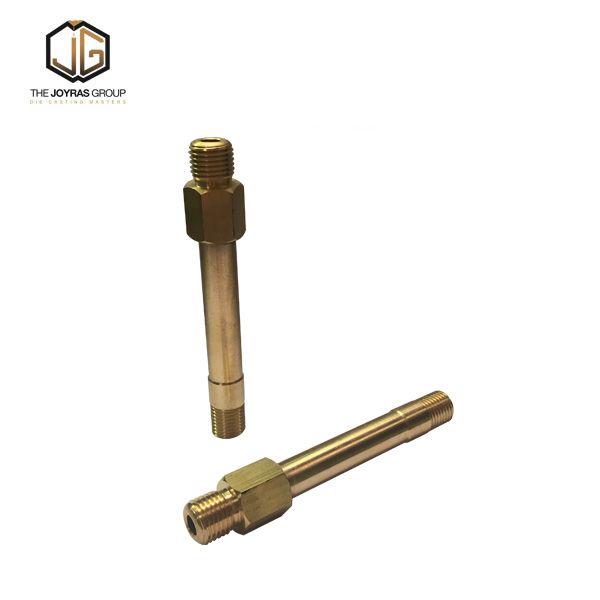Key steps and considerations in the CNC machining of brass parts
2024-03-04
CNC machining of brass parts involves the use of computer-controlled machines to shape and cut brass material into precise components. Brass, an alloy of copper and zinc, is favored for its excellent machinability, corrosion resistance, and aesthetic appeal. Here are the key steps and considerations in the CNC machining of brass parts:
1. Design and CAD Modeling:
- The process begins with the creation of a detailed design using computer-aided design (CAD) software. The design specifies the dimensions, tolerances, and features of the brass part.
2. Material Selection:
- Brass alloy is selected based on the specific requirements of the part. Different brass alloys may be chosen depending on factors such as strength, corrosion resistance, and appearance.
3. Programming:
- A CNC programmer generates a computer numerical control (CNC) program that contains instructions for the CNC machine. This program guides the machine on how to move and position the cutting tools to shape the brass material.
4. Fixturing:
- The brass material is securely mounted onto the CNC machine using fixtures. Proper fixturing is crucial to ensure stability during machining and to achieve accurate and repeatable results.
5. Tool Selection:
- Various cutting tools are selected based on the design requirements and the characteristics of brass. Carbide or high-speed steel tools are commonly used for machining brass.
6. CNC Machining Operations:
- The CNC machine follows the programmed toolpaths to perform machining operations. These operations may include milling, turning, drilling, threading, and other processes to shape the brass material into the desired form.
7. Coolant Application:
- Coolant is often applied during machining to dissipate heat generated by cutting. This helps in preventing tool wear, maintaining precision, and preventing thermal damage to the brass.
8. Quality Control:
- Throughout the machining process, quality control measures are implemented. Precision measuring instruments, such as calipers and micrometers, are used to check dimensions, tolerances, and surface finishes.
9. Deburring:
- After machining, brass parts may have sharp edges or burrs. These are removed through a deburring process to ensure a smooth and safe final product.
10. Surface Finishing (Optional):
- Depending on the application and aesthetic requirements, CNC machined brass parts may undergo additional surface finishing processes such as polishing, plating, or coating to enhance their appearance and corrosion resistance.
11. Final Inspection:
- The finished CNC machined brass parts undergo a final inspection to verify that they meet all quality standards and specifications. This includes a thorough check for dimensional accuracy, surface finish, and overall quality.
CNC machining of brass parts is widely used in various industries, including automotive, electronics, plumbing, and decorative applications. The precision and versatility of CNC machining make it suitable for creating complex and intricate brass components with tight tolerances. Proper tool selection, programming, and machining techniques are crucial for achieving high-quality results in the production of CNC machined brass parts.



